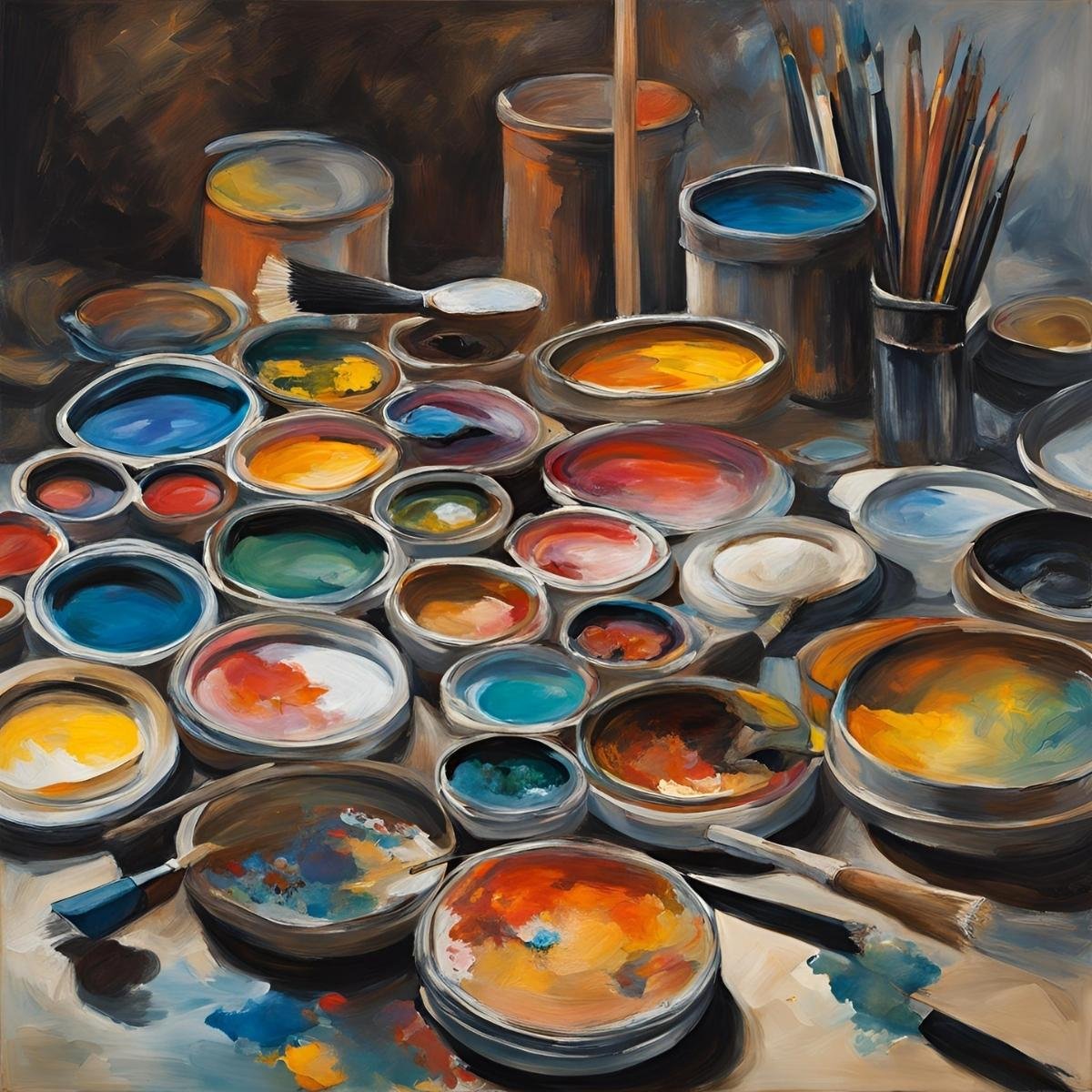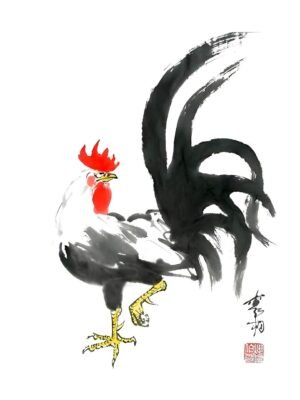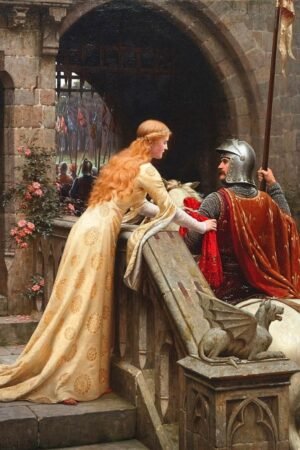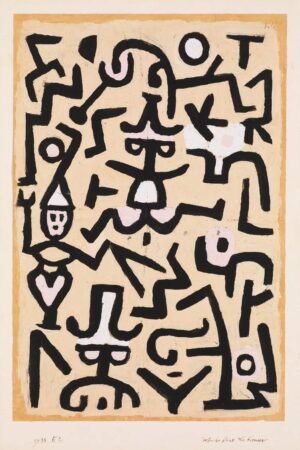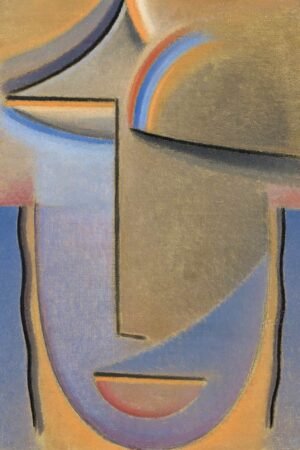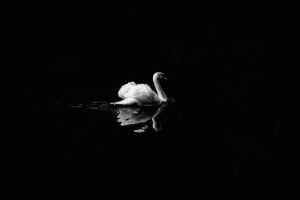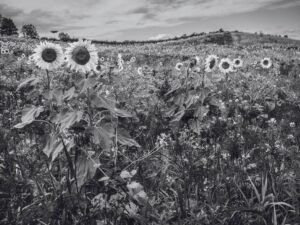Among the many things to decipher when viewing a work of art is what it’s actually made from. To help you do this, we’re going to go over one of the important concepts in art—the medium. Although it is a foundational concept in art, the term medium can actually mean quite a few different things and can be rather nuanced.
So, what does medium in art mean? According to Tate, there are three definitions for the term:
The type of art (e.g. painting, sculpture, printmaking)
The materials an artwork is made from (e.g. oil paint on canvas)
The liquid in which the pigment is suspended to make paint. So, the medium of the medium of oil paint is linseed oil. This can include other additives that an artist might add the change the quality of the paint.
Basically, the medium is used to refer to both the type of art and the artistic material used.
The point of this article is to explore the various meanings and some common examples, so well go over the overarching medium as well as the more specific materials used. It might sound a bit confusing, but it all falls into the idea of the physical material through which the artist gets their artistic message across, and the reality of it is that people use the term “medium” quite loosely nowadays. Lastly, while the medium isn’t absolutely crucial to understanding the concept of the artwork, it is always helpful and interesting.
So, we’ll try to cover as many as we can, but of course, with the evolution of art comes the evolution of mediums. The list is endless, really, and if you’re an artist yourself, don’t let this list limit your ideas!
What are mediums in art? Painting
The majority of this article will be about painting, especially oil painting, because there’s simply so much to talk about—understanding what are mediums in art really begins with painting. Painting has a long history, from cave paintings 65,000 years ago to the present day, and there are tons of different kinds, so let’s get started:
Oil Painting
When you look back into movements in art history, you’ll come across a lot of oil paintings—many mediums on museum tags will simply say “oil on canvas.”
It has been the most popular form of painting for several centuries now—while newer technologies have been invented since, it remains popular because of its unique qualities, namely flexibility, long drying time, and the range and depth of colors and values you can achieve. For example, the luminescent quality of da Vinci’s Mona Lisa or Vermeer’s Girl with a Pearl Earring is largely due to them being painted in oil.
The origins of oil paint date to at least the 7th century CE, when artists used oil (probably from walnuts or poppies) to decorate a cave complex in Afghanistan. However, we most often start oil painting’s history in the 11th century, when it became a widespread European practice. Since then, oil painting has been used by artists all around the world. Here are some famous oil paintings and their specific materials as they are normally written:
- Mona Lisa (1503–06) by Leonardo da Vinci. Oil on poplar panel.
- The Starry Night (1889) by Vincent Van Gogh. Oil on canvas.
- American Gothic (1930) by Grant Wood. Oil on beaverboard.
- The Boating Party (1893–94) by Mary Cassatt. Oil on canvas.
So, what is oil paint exactly? It is a medium consisting of pigments with a medium of drying oil as the binder. You can use a variety of drying oils, such as linseed oil, poppy seed oil, and walnut oil. The typical oil paint is smooth and buttery, and artists can use these mediums to make it even flowier. Here is a brief list of oil painting mediums that are designed to alter its viscosity, surface finish, or drying time:
- Turpentine is a traditional solvent used to dilute oil paint but has a heavier odor than other mediums. Turpentine is derived from natural resins from trees and was invented in 1777, making it a somewhat later invention.
- Low odor thinners are basically Turpentine substitutes that has fewer odors since they are petroleum-based. It has very similar properties to Turpentine—it dilutes the paint and helps it dry faster. Many manufacturers produce their own version of this, but “low odor thinners” will typically be written on the bottle. It also tends to be cheaper than Turpentine.
- Linseed oil dilutes the paint and slows drying time, allowing the artist to make adjustments for longer. Typically, linseed oil has a yellowish tint. There are different kinds of linseed oil that each offer something different, especially in terms of drying time.
- Safflower and Poppy oil are similar to linseed oil, but are a bit paler so are especially good when mixing with white or lighter colors. They also take longer to dry.
- Walnut oil has been a go-to medium with oil paint for centuries. Some Old Masters favored walnut oil rather than linseed oil because it was slightly less yellow and dries faster.
There are also options that are more environmentally friendly and further reduce the odor, flammability, and toxicity, which is attractive to some artists. Another interesting aspect to think about is air travel—many of the above mediums aren’t allowed on planes, so artists are looking for more natural oil mediums such as lavender oil.
Briefly, some disadvantages of oil paint is that it tends to run more expensive, there are more chemicals involved in the process, and to some, the long drying time is not ideal (although artists, to some extent, can speed up the drying time by adding mediums). Additionally, like all art, conservation can be difficult.
Let’s go over some overarching steps of creating an oil painting so you can understand it further:
- Usually, oil paintings are done on canvas stretched over wooden support, secured with tacks or staples. Before applying the oil paint to the canvas, artists apply a primer—typically gesso—to reduce the absorbency of the cloth. One can also use a smooth panel, also primed, for a less textured surface.
- After their surface is prepared—whether it be a panel, canvas, or even paper—painters move on to adding the oil paint. Typically, painters apply oil paint in thin layers, which allows them to achieve a beautiful luminosity, subtle graduations of color, and realism through building up the painting in subtle layers. This is something very unique to oil painting. This step includes added the above-mentioned mediums to affect texture and drying time.
- Finally, a coat of varnish should be applied to protect it from the atmosphere it sits in—this thin coat can be matte or glossy, and protects it from minor abrasions and accumulations of dirt or smoke. Varnish also brings out the full tonal range and color intensity of the colors. This varnish can be removed by experts many years later if needed.
You’ll notice that a lot of oil painting mediums have to do with drying time, since that is one of the most distinctive characteristics of it. Some artists love this longer drying time; others hope to extend it even further to flesh out a specific area without pressure.
Lastly, one more concept that is important to oil paint is that every color is, in fact, a little bit different. Different pigments naturally have different drying times, so different colors will be affected. For example, Raw Sienna and Cobalt blue will dry relatively fast (around two days) and whereas Permanent Rose might take upwards of five days to dry.
So, that wraps up many concepts regarding the medium of oil painting and the mediums withinoil painting. It’s a fascinating form of art that continues to thrive in popularity, so its helpful to know some of these terms.
Watercolor
Watercolor is made from pigments suspended in a water-based solution. As opposed to many other forms of painting that use linen and canvas, the typical support is watercolor paper, which is usually made from cotton. Watercolors are often easy to spot due to their delicate translucent appearance.
Watercolor is an ancient art form, especially in Asia—it’s been the primary art form in China, Korea, and Japan, as they have long been making “brush” or “scroll” painting which are forms of watercolor. India and Ethiopia also have long watercolor art traditions, but in the United States watercolor wasn’t seen as a legitimate way to make a “finished” artwork until more recent decades. Rather, Western artists used it as a sketching tool.
What are mediums in art? Acrylic Painting
Invented in the 1930s in Germany, acrylic paint remains a very popular media for artists—it differs quite a bit from oil painting so it is makes an attractive alternative for many. It is a formula of acrylic resin, water, and particles of pigment.
Chemically, it is very different, so it has different properties when in use. Briefly, they are:
- Fast-drying—between layers, it only takes 15-20 minutes to dry
- More opaque
- Much more elastic than oil paint
To artists, acrylic opens up a whole new world. It’s slightly more flexible than watercolor, but it dries much quicker than oil paint, making it a powerful art medium in its own right. It can be used for thin painting to sort of mimic the appearance of watercolor but can also be built up with a very thick impasto technique. Additionally, acrylic paint is great for use on many different surfaces—artists are not limited to just canvas or paper.
Here are some acrylic mediums to affect the qualities of the paint:
- Glazing medium will make acrylic paint a bit more transparent and will allow for subtle glazing techniques.
- Gloss medium will make acrylic paint both thinner and glossier.
- Matte medium will make the acrylic paint (which is naturally glossy) a bit duller.
- Gel medium is a paste-like, white substance that will thicken the paint. This is perfect for impasto techniques. Gel mediums can come in gloss and matte versions as well.
- Modeling paste is a thicker version of gel medium. It’s also harder, so you can almost sculpt the surface of your painting.
- Texture gel is an interesting one—you can imitate textures such as sand or glass beads by adding this to your acrylic paint, making it a fun experimental medium.
Their faster drying time and extremely bold colors made them perfect for emerging visual art movements like Pop Art in the 1960s. Additionally, the mediums for acrylic paint are generally going to be less toxic than those of oil paints, which is another plus for many.
A particularly interesting quality of acrylic paint is that since it’s flexible and elastic because of its chemical makeup, the paint will actually contract and expand depending on the atmosphere around it. This allows minimal flaking and cracking, which is extremely common with oil painting, which is a huge plus for conservation.
Gouache
Gouache is very similar to watercolors, but you’ll see it listed as a medium so we wanted to cover it separately. The main difference between gouache and watercolor is that the latter is more opaque—when you apply it to paper, you won’t be able to see the paper beneath nearly as much as with translucent watercolors. It is sort of in between watercolor and acrylic in this way.
Encaustic
This is another painting medium that is a bit less common, but you’ll definitely see it around. Also called hot wax painting, it is made from pigments mixed with hot wax; the molten medium is then applied to a prepared wood or canvas surface. Typically, the common basis of encaustic painting includes beeswax, damar resin, and pigments.
We wanted to include it since its a very interesting, unique, and ancient art medium—it actually dates to the 5th century B.C.E., and continues to be popular today.
Some famous more modern artists who worked with encaustic are Pablo Picasso, Jaspar Johns, and David Hockney.
What are mediums in art? Drawing
Drawing can encompass a myriad of media, just like painting. As it refers to anything made with an instrument to mark paper, some of the instruments that fall under drawing are graphite pencils, pens, colored pencils, markers, charcoal, and more.
Like painting, drawing has a very long history, both as an art medium and in regards to broader uses. Throughout art history, drawing often served as a preliminary step in order to form a foundation for a painting. Young people training as artists often had to master drawing first—this is still sometimes the case today, where many art schools require Drawing 101 to be taken before painting classes.
Each of these markmaking materials serve as their own medium and have their own qualities—charcoal, for example, is great for subtle blending and gradations, where as markers are intensely bold. When looking at what are mediums in art, you might see the following regarding drawing:
- Charcoal on paper
- Pen on linen
- Colored pencil on paper
Sculpture
Sculpture is another ancient art medium that still thrives today. The list of sculpture mediums is long, but here are some of them:
- Wood
- Clay
- Wax
- Stone
- Metal
- Fabric
- Glass
- Plaster
- Marble
- Random “found” objects
These mediums may be carved, molded, wrought, sewn, welded, combined, and more. Sculpture is a medium that arguably has gone under the most radical transformations with the evolution of art—artists have ventured into installation, found materials, and more, so sculpture undoubtedly can look much different than a classical Greek sculpture that we are all used to.
Photography
The last overarching medium were going to touch on is photography. Photography, according to Tate, is “the process or practice of creating a photograph – an image produced by the action of light on a light-sensitive material.”
But, like many mediums in art, there is further classification involved. The biggest difference is non-digital, which was invented much earlier, and digital. Non-digital photographic mediums include, for example, include complex chemical processes such as tintype photography. Digital photography was invented in 1975, and the way that people note the medium of digital photos depends on the print method and paper used. This invention seriously through the art world for a loop, and made critics and artists themselves consider the question of what are mediums in art. Now, it is considered fine art, but it took about a century to get there.
…. and then some more
If you’ve visited a museum of art—especially a museum of modern art—you’ll know that this list is not exhaustive. With every year that passes, another artist finds a material that hasn’t been used before. So, when considering the question “what are mediums in art?” it’s really changing as time passes.
Take, for example, Marcel Duchamp submitting a urinal to an art exhibition in 1917—at the time it was ridiculed, but now it is one of the greatest works in history and it paved the way for future movements. Or, let’s look at Tara Donovan, a contemporary artist who makes huge installations made completely out of styrofoam cups. Yet another artist who’s pushed boundaries is Andy Goldsworthy, who makes ephemeral works directly in nature—he’ll arrange delicate twigs and bright flowers, photograph his creation, and then let nature reclaim it. And then, there’s a whole range of performance art and digital art that needs a whole article of its own…
That’s all to say that while we have thousands of years of painting, drawing, and sculpting, we also have new mediums being invented everyday by innovative and passionate artists. We hoped this article informed and inspired you.
Discover Our Latest Art Prints
Explore the latest additions to our curated art collection, designed to inspire every room.
-

Chinese Rooster Art Print
Price range: 23.00$ through 139.00$ This product has multiple variants. The options may be chosen on the product page -

God Speed Art Print by Edmund Blair Leighton
Price range: 23.00$ through 209.00$ This product has multiple variants. The options may be chosen on the product page -

Paul Klee Comedians Handbill Abstract Art Print
Price range: 23.00$ through 209.00$ This product has multiple variants. The options may be chosen on the product page -

Abstract Head of woman, Evening Print Alexej von Jawlensky
Price range: 23.00$ through 209.00$ This product has multiple variants. The options may be chosen on the product page -

White Swan Floating on Dark Water Wall Art Print
Price range: 23.00$ through 209.00$ This product has multiple variants. The options may be chosen on the product page -

Black and White Sunflower Field Wall Art Print
Price range: 23.00$ through 209.00$ This product has multiple variants. The options may be chosen on the product page

